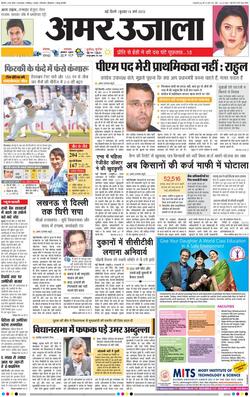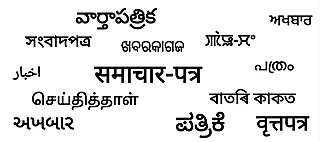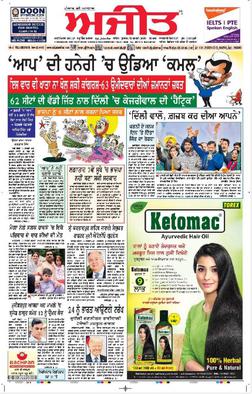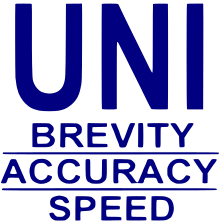
The Press Trust of India Ltd., commonly known as PTI, is the largest news agency in India. It is headquartered in New Delhi and is a nonprofit cooperative among more than 500 Indian newspapers. It has over 500 full-time employees as of 1 January 2022, including about 400 journalists. It also has nearly 400 part-time correspondents in most of the district headquarters of the country. PTI also has correspondents in major capitals and important business centres around the world. It took over the operations of the Associated Press of India from Reuters in 1948–49. It provides news coverage and information of the region in both English and Hindi.

Dainik Jagran is an Indian Hindi language daily newspaper.

The Siasat Daily is an Indian newspaper published by the Siasat Press based in the city of Hyderabad, Telangana. It operates the digital news website Siasat and is the publisher of the Siasat English Weekly magazine and the Siasat Urdu Daily newspaper whose editions are also available as electronic papers.

Dainik Bhaskar is a Hindi-language daily newspaper in India which is owned by the Dainik Bhaskar Group. According to the World Association of Newspapers, it ranked fourth in the world by circulation in 2016 and per the Indian Audit Bureau of Circulations was the eleventh largest newspaper in India by circulation as of 2022. Started in Bhopal in 1958, it expanded in 1983 with the launch of Dainik Bhaskar's Indore edition. The Dainik Bhaskar Group is present in 12 states with 65 editions in Hindi, Marathi, and Gujarati.

Lala Jagat Narain was an Indian editor, member of the Punjab Legislative Assembly, Member of Parliament and founder of the Hind Samachar media group.

Associated Press of Pakistan (APP) is a government-operated national news agency of Pakistan. APP has News Exchange Agreements with 37 Foreign News Agencies and has "around 400 editorial staff including around 100 Correspondents at the District and Tehsil levels".

Amar Ujala is a Hindi-language daily newspaper published in India which was founded in 1948. It has 22 editions in six states and two union territories covering 180 districts. It has a circulation of around two million copies. The 2019 Indian Readership Survey reported that with 9.65 million it had the 4th-largest daily readership amongst newspapers in India.
HT Media is an Indian mass media company based in Delhi, India. It has holdings in print, electronic and digital media.
Indo-Asian News Service or IANS is a private Indian news agency. It was founded in 1986 by Indian American publisher Gopal Raju as the "India Abroad News Service" and later renamed. Their main offices are located in Noida, Uttar Pradesh. The service reports news, views and analysis from the subcontinent about the country, across a wide range of subjects, to subscribers via the Internet.

Hindi media refers to media in Hindi language and its dialects, across the Hindi belt in India, and elsewhere with the Hindi-speaking Indian diaspora.

Sainik Samachar is a journal about the India's Armed Forces. The journal is published every fortnight in thirteen languages including English on behalf of the Ministry of Defence, Government of India.

Ajit(Daily Ajit) is a Punjabi language daily newspaper published in Jalandhar, India. The newspaper is run by Sadhu Singh Hamdard Trust. The newspaper was founded in 1941 in Urdu language. Veteran journalist and ex-Rajya Sabha member, Barjinder Singh Hamdard, is the current editor-in-chief. In 2007–08, it claimed a circulation of more than 333 thousand.
Hindusthan Samachar is the first multilingual news agency in India, subscribed by more than 200 newspapers and almost all the news channels including Doordarshan (DD).
Free Press of India was an Indian nationalist-supporting news agency founded in the 1920s by Swaminathan Sadanand, during the period of the British Raj. It was the first news agency owned and managed by Indians. Beset by dubious business acumen from the outset, and beholden to those who financed it, the agency failed to obtain substantial support from Indian-owned press and hence closed down in 1935. It was revived briefly between 1945 and 1947 before being stifled by the government of the newly independent country. It was at various times a supporter of the Swaraj Party and, later, of the Responsive Cooperation Party, as well as various business interests.
The National Herald is an Indian newspaper published by The Associated Journals Ltd and owned by Young India Limited a company by Rahul Gandhi and Sonia Gandhi and Shiva Publications a partnership firm by Vishnu Goyal & Rekha Goyal. It was founded by India's first prime minister Jawaharlal Nehru in 1938 as a tool to win independence. It was banned by British government in 1942 during the Quit India movement. It was one of the major English language newspapers in India after the end of the British Raj, and occasionally published op-eds authored by Nehru. The newspaper ceased operations in 2008 for financial reasons. In 2016, it was relaunched as a digital publication. The newspaper has been linked to and controlled by members of the Indian National Congress political party.

Hind Samachar is a daily Urdu newspaper that is circulated in Mumbai. It was one of the three newspaper started by the Punjab Kesari Group back in 1948. Combined these three newspapers have combined circulation of 975,000 copies on weekdays and 1.05 million copies on weekends. The head office is located in Civil Lines in Mumbai, and the newspaper is printed from Jalandhar, Ambala, and Jammu.

Udant Martand is the first Hindi language newspaper published in India. Started on 30 May 1826, from Calcutta, the weekly newspaper was published every Tuesday by Pt. Jugal Kishore Shukla. It was closed on 4 December 1827 due to financial crisis.

The Media in Gujarati language started with publication of Bombay Samachar in 1822. Initially the newspapers published business news and they were owned by Parsi people based in Bombay. Later Gujarati newspapers started published from other parts of Gujarat. Several periodicals devoted to social reforms were published in the second half of the 19th century. After arrival of Mahatma Gandhi, the Indian independence movement peaked and it resulted in proliferation of Gujarati media. Following independence, the media was chiefly focused on political news. After bifurcation of Bombay state, the area of service changed. Later there was an increase in readership due to growth of literacy and the media houses expanded its readership by publishing more editions. Later these media houses ventured into digital media also. The radio and television media expanded after 1990.
United Press of India was one of the important news agencies during British Raj in India. It was established in 1933 by Bidhu Bhusan Sengupta, who was also the first managing director of the agency.
Samachar was founded in February 1976, after the merger of United News of India, Press Trust of India, Samachar Bharati and Hindustan Samachar. The news agency was directly under the control of the government of India.













